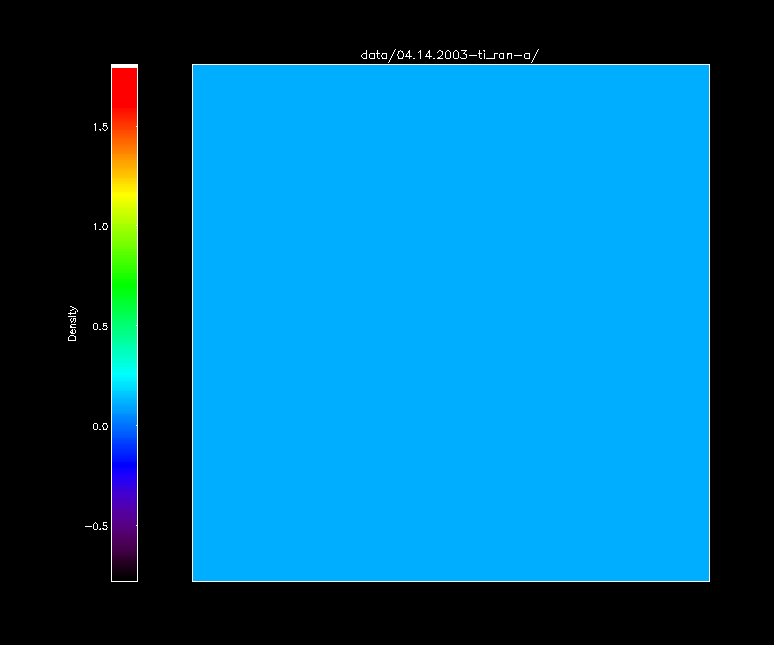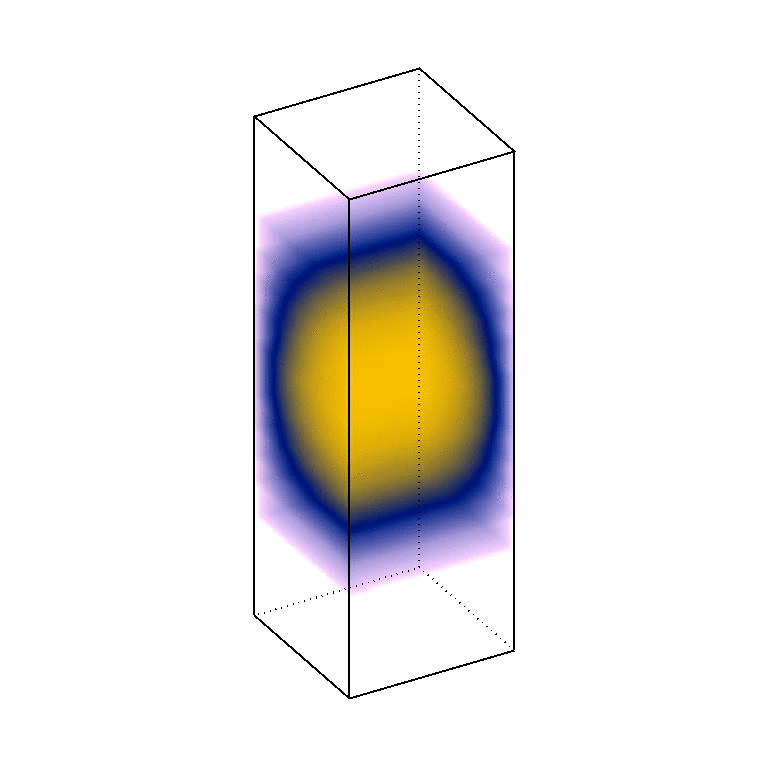Turbulence and Structure in the Diffuse Interstellar Medium
In the outer parts of spiral galaxies, most of the mass in the
interstellar medium consists of neutral atomic hydrogen gas, with
traces of other elements and dust.
The gas is heated primarily by the photoelectic effect: UV radiation
is absorbed by grains, releasing electrons that share their energy
with the ambient gas. Various processes can cool the atomic gas,
depending on the temperature.
Development
of thermal instability in interstellar gas

|
Because cooling is strongest at
high temperatures ~ 10,000 K (by Lyman alpha emission from hydrogen)
and low
temperatures ~ 100 K (by IR radiation from carbon), atomic gas undergoes thermal instability. This causes
some regions to condense, and other regions to expand. The result
is a system of cold, dense clouds that are embedded in a warm, tenuous
intercloud medium. These clouds are not static, but
continually change
shape due to pressure gradient forces on their surfaces. Using
numerical simulations, the nonlinear development of thermal instability
can be studied. |
Later evolution of
clouds

The interstellar medium is subject to other instabilities, in
addition to the thermal instability that creates clouds. One of
these instabilities is called the magnetorotational
instability (MRI) . The MRI arises due to interaction
between magnetic tension forces and sheared rotation in a galaxy (since
the interior of the galaxy rotates more rapidly than the
exterior). As a consequence of MRI, the interstellar medium
becomes highly turbulent. Shear stretches out individual clouds,
and turbulence both breaks up clouds and causes cloud
agglomeration. The interstellar medium
is constantly being stirred up by recurring episodes of
MRI, even far from any stars.
Development of thermal and
magnetorotational instability in 3D model of a local interstellar region

Since the clouds are much denser than the intercloud gas, when
gravity is included in our models, the clouds tend to sink toward the
midplane of the galactic disk. This is similar to what happens to a
rock released in air: it falls to the ground, unlike a helium ballon
(which
is buoyant and rises up). The interstellar gas becomes vertically stratified, with dense
clouds preferentially nearer to the midplane. Some dense clouds
are present further away from the midplane, because turbulence (driven
by the magnetorotational instability) continues to stir up the whole
system.

Evolution of a column
of interstellar gas
For more information, see:
Our publications
Return to Eve
Ostriker's Research Page
Return to Eve
Ostriker's
Home Page
This material is based upon work
supported by the National Science
Foundation (NSF). Any opinions, findings,
conclusions, or recommendations expressed here are those of
the author(s) and do not necessarily reflect the views of the NSF.




